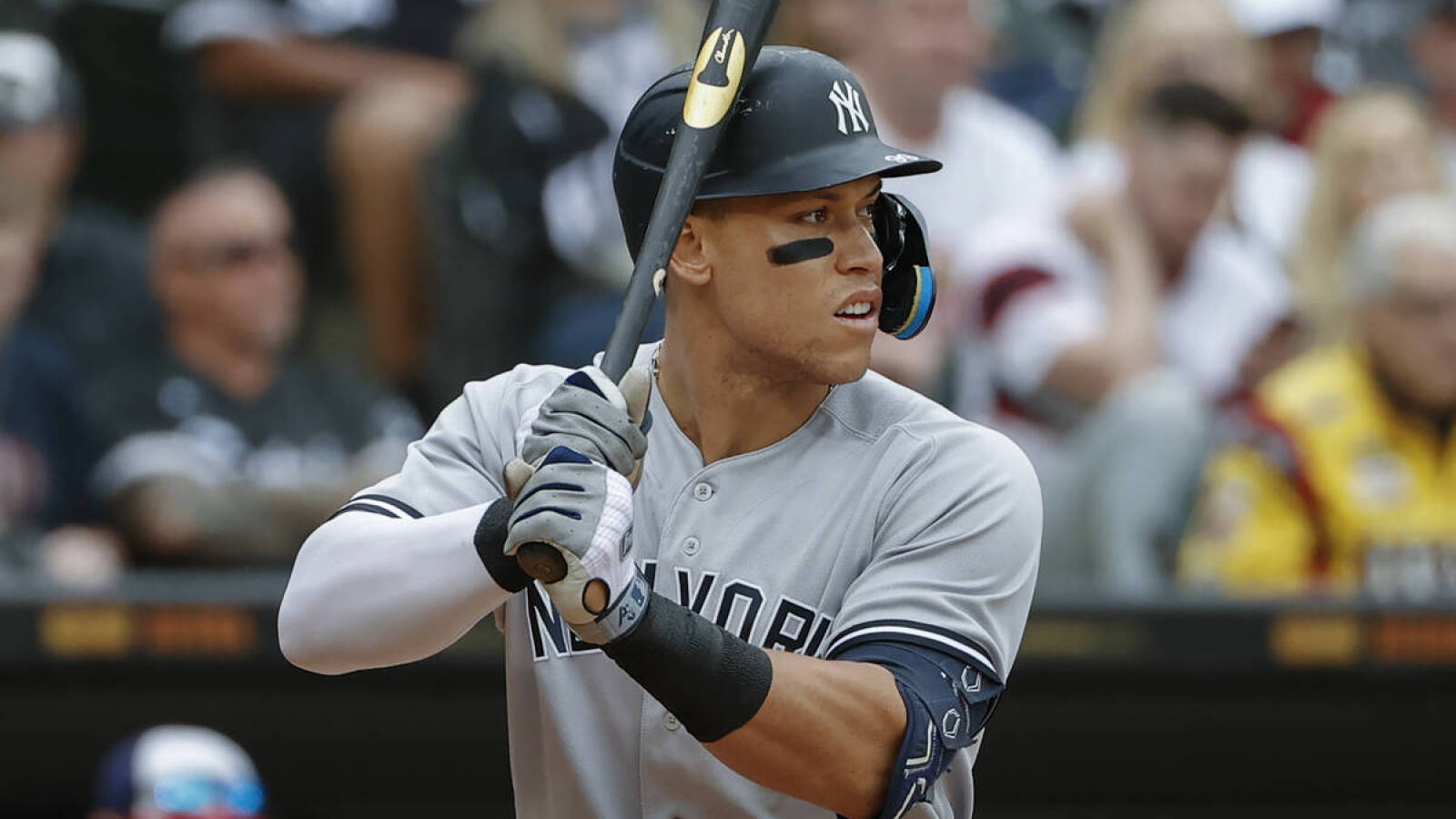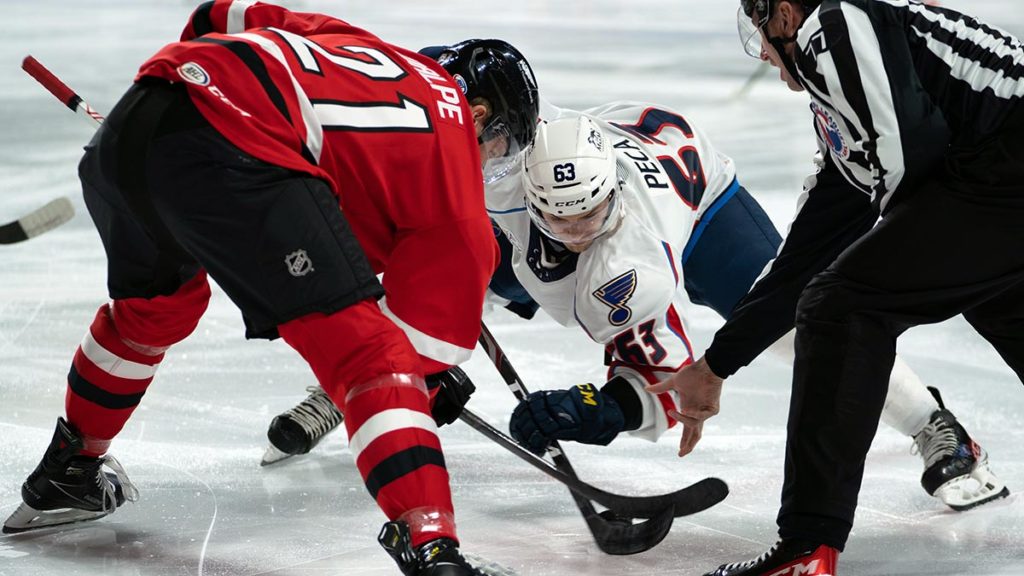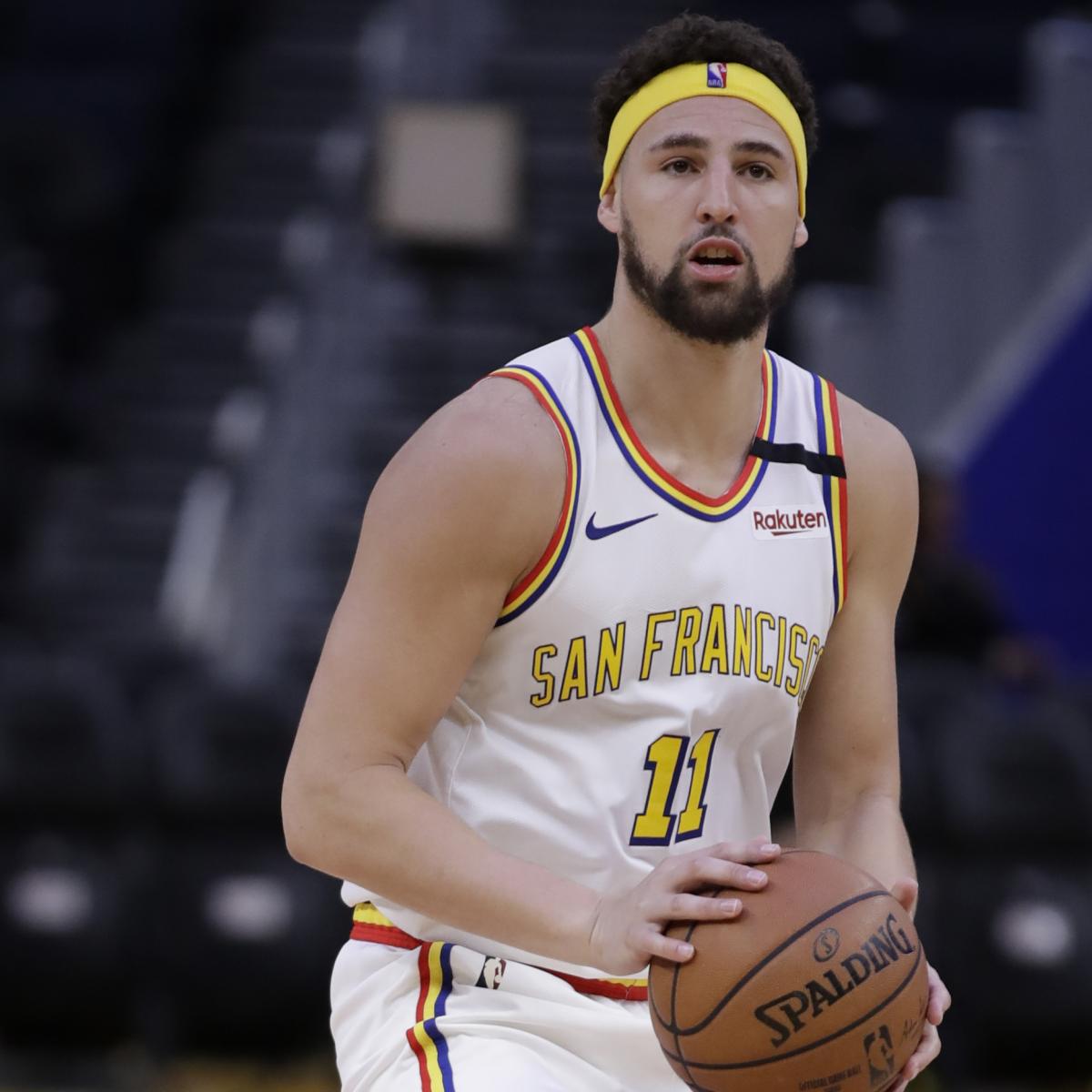1. Aaron Judge, RF, Yankees: When Yankees general manager Brian Cashman made the surprising decision to announce the terms of the contract that was offered to (and rejected by) Judge — a seven-year, $213.5M extension — there were plenty of onlookers convinced Judge had made a sizable misstep. A $30.5M annual salary over seven years would place him among the game’s top earners but not quite in the elite tier.
A slow start might’ve made the decision look questionable, but Judge has gone the opposite route. He’s been the best hitter in baseball aside from Mike Trout, by measure of wRC+, leading the majors in homers and trailing only Trout in slugging percentage by the narrowest of margins (.693 to .692). Judge is walking at a 10.7% clip, his strikeouts (26.6%) are down a good bit from his earlier seasons when rates around 31% were his norm, and his batted-ball profile has practically broken Statcast. Judge is averaging a comical 96.9 mph off the bat this season, and he’s ripped 64% of his batted balls at greater than 95 mph.
Judge’s free-agent contract will begin with his age-31 season, and that’s one distinct disadvantage to him — particularly relative to younger free agents like the trio of shortstops who directly follow him on this ranking. That said, there’s simply no discounting the fact that Judge’s offense is on a new level this season, which is saying something given the high bar he’s previously established. If he maintains even 75% of this pace for the remainder of the season, that seven-year term and $30.5M AAV are both going to feel light. Right now, an eight-year deal at a heartier AAV is easy to imagine, and the longer Judge keeps hitting like this, the more those numbers will increase.
2. Carlos Correa, SS, Twins: Correa was fortunate to dodge a broken finger when he was plunked on the hand recently, instead only sitting out a minimal 10-day stint due to a bone bruise. The former No. 1 overall pick shocked the baseball world by signing the fourth-largest AAV ever with the Twins ($35.1M) — albeit on a three-year deal laden with opt-out provisions. The commonly held belief is that Correa will opt out after the 2022 season and return to the market in search of the long-term mega-deal that eluded him this past offseason.
Whether that contract is there will hinge both on how many games Correa plays and on how well he performs in his new environs. He got out to a slow start in Minnesota but repeatedly insisted that he wasn’t worried, and his confidence has begun to manifest into production. Correa is hitting .382/.443/.545 over his past 61 plate appearances, and even when he was struggling through poor results before that, he was making loads of hard contact. He’s not on pace to match last year’s career-best defensive numbers, but no one is disputing that the 2021 Platinum Glover is anything less than a top-notch defensive player.
It’s fair to wonder whether Correa will be able to secure a 10-year contract with a premium annual value after the closest he came this past offseason was a reported 10-year, $275M offer from the Tigers prior to the lockout. Even if Correa “settles” for a seven- or eight-year contract, though, the fact that he’ll play nearly all of the 2023 season at age 28 is a huge point in his favor. An eight-year deal would only run through Correa’s age-35 season, and a lengthier pact can’t be ruled out if he continues to pick up the pace at the plate.
3. Trea Turner, SS, Dodgers: Turner and Correa could arguably be flipped in ordering here, but I’m listing him third due to the fact that he’s more than a year older. While he may be a lesser defender and possess less power than Correa, he’s still a good defensive shortstop with above-average pop. He’s also been more durable in recent years with better contact skills and more value on the basepaths. Some teams will prefer Correa. Some will prefer Turner. Both will be in demand. Both will get paid — a lot.
Broadly speaking, there are very, very few players who present as much all-around value as Turner. He’s unlikely to rip 30 home runs or lead the league in on-base percentage, but Turner is a perennial 20-homer, 40-steal threat with a track record of above-average defensive marks, a lower-than-average strikeout rate and a lifetime .302/.358/.488 batting line. He slugged a career-high 28 home runs in 2021 and was hitting at a similar pace in 2020’s shortened season, but he’s only left the yard three times in 184 plate appearances this year.
Even if Turner reverts to his prior levels of power, there’s no real weakness in his game. He’s a dependable four- to five-WAR player who showed in 2021 that he has six- to seven-WAR upside when at his absolute best. Turner will turn 30 on June 30 in the first year of his new contract, and it’s reasonable to expect that he could find a lucrative eight-year deal in free agency. One thing worth keeping an eye on: defensive metrics are quite down on his early work (-3 DRS, -6 OAA).
4. Xander Bogaerts, SS, Red Sox: The most consistent hitter among this trio of shortstops, Bogaerts would top Correa and Turner were he viewed as an average defender at the position. Instead, his glovework has struggled so much that there was a good bit of drama surrounding whether he’d move off the position upon Boston’s signing of Trevor Story.
Bogaerts can opt out of the final three years and $60M on his contract, and he’s a lock to do so even with the shaky defensive skill set at shortstop. He’s hitting .323/.385/.458 as of this writing and carries a gaudy .300/.372/.518 slash (135 wRC+) dating back to 2018. Bogaerts’ career-high 33 home runs came during the juiced ball season, and he’s otherwise been more of a 20- to 25-homer bat. He’s been remarkably consistent in terms of his solid walk rates, lower-than-average strikeout rates and batting averages, though, and any team that signs him can feel confident it’s getting a true middle-of-the-order threat.
The question will be what position he plays, as there won’t be many (if any) teams comfortable with the idea of playing Bogaerts at shortstop for the next six-plus years. A team could play him there in the early stages of a new contract, but Bogaerts will likely be viewed by some teams as a second baseman or third baseman only. He’s never posted a positive total in Defensive Runs Saved and only has once in Outs Above Average (in 2017). For his career, he’s at -58 DRS and -42 OAA. His bat might still carry him to an eight-year deal, but Bogaerts’ days as a shortstop are likely dwindling — and the market could well reflect that reality.
5. Joe Musgrove, RHP, Padres: Musgrove, 30 in December, has improved his stock every year since 2017, either by improving his rate stats or his innings count. It’s been a steady march toward his current top-of-the-rotation status, and he’s now poised to cash in next winter with a blend of youth and general excellence that currently has him as MLBTR’s top-earning starter.
Since Musgrove ramped up his curveball usage in 2020, he’s pitched to a combined 3.03 ERA with a 27.7% strikeout rate and 7.1% walk rate in 273 innings. He’s not missing as many bats in 2022 as he did in 2020-21, but strikeouts are down leaguewide and he’s offsetting that with a career-best 4.4% walk rate in 52 innings. Musgrove currently boasts a microscopic 1.90 ERA in 52 innings. He ranks in the 82nd percentile or better in fastball spin rate (97th), curveball spin rate (82nd), opponents’ chase rate (93rd), walk percentage (89th), average exit velocity (84th), expected ERA (87th), expected wOBA (87th) and expected slugging percentage (83rd), per Statcast.
Musgrove might not be a household name whose track record is littered with All-Star appearances and Cy Young votes, but his current trajectory should change that. A five-year deal feels like the floor, and a healthier six-year pact seems likely.
6. Nolan Arenado, 3B, Cardinals: Arenado has said in the past that he plans to remain in St. Louis for the long haul after being traded from the Rockies, so this could very well be a moot point. He made good on those promises by forgoing the first opt-out opportunity in his contract this past offseason, but the Cardinals tacked an extra year (at $15M) and an extra opt-out provision onto his contract upon acquiring him.
If Arenado continues anywhere near his current pace, it’ll at least be more tempting to see what the market might bear. Shedding the “product of Coors Field” narrative in full this year, Arenado is raking at a .288/.351/.545 pace — all with his typical brand of elite defense (5 Defensive Runs Saved, 4 Outs Above Average, 3.5 Ultimate Zone Rating in just 324 innings).
Arenado has five years and $144M remaining on his contract following the 2022 season and will turn 32 next April. The remaining five years will carry Arenado through his age-36 season at a rate that’s lighter than many of the game’s top-end stars. We’ve seen infielders Freddie Freeman, Corey Seager, Marcus Semien and Josh Donaldson all sign free-agent deals that run through their age-37 seasons in recent years. Again, the likeliest outcome is that Arenado stays put — based on the infielder’s own wording — but if he does choose to test the market, the earning power will be there.
7. Jacob deGrom, RHP, Mets: If deGrom were healthier, he’d be higher on this list, age be damned. However, deGrom hasn’t pitched since July 7, 2021 due to a forearm strain that ended his 2021 season and a stress reaction in his scapula that has prevented him from pitching so far in 2022.
No one needs much of a primer on just how dominant deGrom is when he’s healthy. He’s a two-time Cy Young winner and probably would’ve won a third in 2021 with better health. He posted a superhuman 1.08 ERA, 45.1% strikeout rate and 3.4% walk rate in 92 innings while averaging 99.1 mph on his fastball last year. A healthy deGrom is arguably the best pitcher on the planet — evidenced by the 1.94 ERA he’s compiled over his past 581 innings.
deGrom is signed through 2023 (plus a 2024 club option) but has said, even with his injury, that he’ll opt out of the contract and forgo the $30.5M he’s guaranteed next year. If he can return in late June or early July and dominate down the stretch, a multi-year deal in the neighborhood of teammate Max Scherzer’s record-setting $43.33 annual salary is in play. Even if deGrom struggles or doesn’t throw a pitch in 2022, a team would likely top that $30.5M salary to bring him in on a short-term, high-risk gamble.
8. Carlos Rodon, LHP, Giants: Drafted with the No. 3 overall pick back in 2014, Rodon was heralded as a potential top-of-the-rotation arm for the White Sox He eventually achieved that status, but not until the seventh year of his major league career. For Rodon’s first six years, he was an oft-injured power arm who’d flash ace potential but lacked both the consistency and the durability to get there.
Durability remains a concern after Rodon pitched just 36 innings over the 2021 season’s final 10 weeks due to shoulder fatigue. He remained effective during that time but worked with a diminished fastball and was not given a qualifying offer by the White Sox — despite his elite production (on a per-inning basis). But what Rodon has done since that 2021 breakout is prove that he is, when healthy, a bona fide No. 1 starter.
Over his past 177 1/3 innings, Rodon has a 2.64 ERA with a dominant 34.5% strikeout rate against just a 7.4% walk rate. Since Opening Day 2021, Rodon leads all major league pitchers (min. 100 innings) in strikeout percentage. He ranks 10th in swinging-strike rate and owns the eighth-lowest opponents’ contact rate on pitches inside the strike zone. Rodon can opt out of the second year and $22.5M on his current contract if he pitches 110 innings this season. If he can make 30 starts this year, there’s probably a five-year deal waiting for him in free agency — especially when considering the fact that he won’t turn 30 until December.
9. Willson Contreras, C, Cubs: Clearly the top catcher on next winter’s market, Contreras has gotten out to a strong start in 2022, hitting at a .258/.382/.458 clip with five homers through his first 144 plate appearances. That puts him roughly on pace for what would be the fourth 20-homer season of his career. Contreras, a two-time All-Star, ranks fourth among all catchers (min. 500 plate appearances) in fWAR and fifth in wRC+ dating back to the 2019 season. He just turned 30, making the first season of a new contract his age-31 campaign.
Contreras’ reps will surely be looking to topple Yasmani Grandal’s four-year, $73M deal with the White Sox. With a strong enough finish, Contreras could reasonably push to join the likes of J.T. Realmuto, Yadier Molina and Buster Posey as catchers who earned $20M-plus annually during their prime.
10. Brandon Nimmo, CF, Mets: Perennially underrated, Nimmo doesn’t get the love he deserves when looking at his career production. There’s no skirting the huge injury risk associated with him, but when he’s been healthy enough to take the field, Nimmo’s elite plate discipline and above-average power have resulted in production that’s 35% better than that of a league-average hitter, by measure of wRC+. Nimmo has walked in 14.6% of his career plate appearances en route to a .269/.392/.445 batting line. He’s only reached double-digit homers once in his career, though that’s due to injuries and to the shortened 2020 season (when he played in 55 of 60 games and popped eight homers). On a rate basis, however, Nimmo’s career .176 ISO (slugging minus average) is comfortably north of league average.
Like Contreras, Nimmo is the best player at his position and arguably the only free-agent option for a team seeking an everyday center fielder. He hasn’t graded out as an elite defensive center fielder, but Defensive Runs Saved, Ultimate Zone Rating and Outs Above Average all think he’s been an above-average defender there over the past two seasons. He’s not a huge stolen base threat, but Statcast credits Nimmo with 92nd percentile sprint speed dating back to 2021.
Some teams will balk at the injury history, while others may not be keen on promising a weighty guarantee to a player who’s never reached 20 home runs in a season. However, we’ve seen OBP- and defense-driven center fielders like Dexter Fowler and Lorenzo Cain cash in before. A fifth year may be hard to come by, but a strong four-year deal seems attainable. Another prolonged absence could quickly drop Nimmo off this list, but as things stand right now, Nimmo is the type of free agent who’ll probably surprise fans with the contract he ultimately signs.
Honorable Mentions: Justin Verlander, Sean Manaea, Edwin Diaz, Dansby Swanson, Josh Bell, Chris Bassitt, Nathan Eovaldi, Zach Eflin





